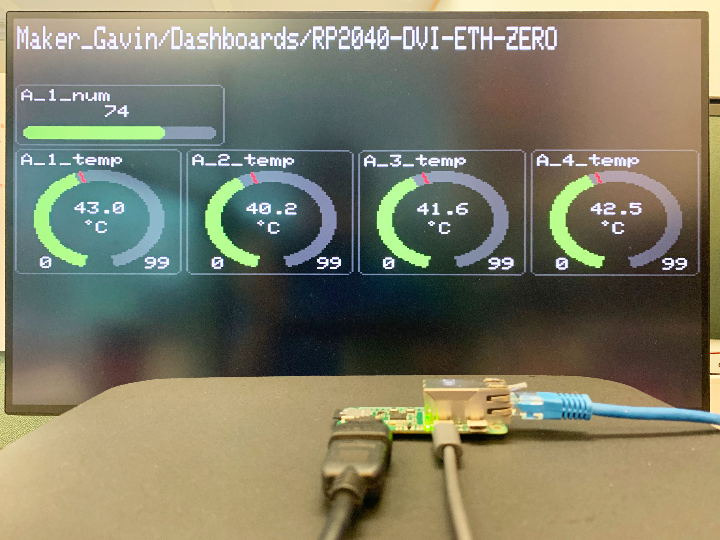RP2040-ETH-DVI-ZERO: Adafruit IO Dashboard Monitor ( HDMI / DVI Mode )
A newly developed Raspberry Pi RP2040 development board with DVI interface and Ethernet. This project can display adafruit IO dashboard and followup any change.

A newly developed Raspberry Pi RP2040 development board with DVI interface and Ethernet. This project can display adafruit IO dashboard and followup any change.

Similar projects you might like
ARM Cortex-M MCU OS
yss Embedded Operating System
taylor11
7223
4
yss_example_project [STM32F103VC]bootloader_using_W5100S
yss_example_project [STM32F103VC]bootloader_using_W5100S
mason9
8827
1
nrfconnect / sdk-zephyr
nrfconnect / sdk-zephyr
mason7
7174
2
Meet the Golioth Aludel
Meet the Golioth Aludel
mason5
6104
1
Zephyr Alleviates your Firmware Headaches
Zephyr Alleviates your Firmware Headaches
mason8
6865
1
Our projects uses Cayenne which is a drag-and-drop IoT platform, developed by my Devices, that empowers users to quickly prototype and share
CLOUD IOT based Single axis Solar tracker system
taylor9
6047
1
It supports 4 sockets for communication at the same time, and each socket is configured with the working mode independently.
Industrial 4g Router Serial Port Networking Server Rs485 Gat
taylor2
3673
0
In this vedio,We have presented the PPT on Home Automation using Arduino Uno.We have described the components,software required,requirements
Home Automation Solution
scarlet7
6013
2